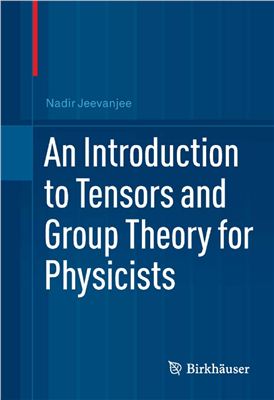Birkh?user, 2011. - 244 pages.
An Introduction to Tensors and Group Theory for Physicists provides both an intuitive and rigorous approach to tensors and groups and their role in theoretical physics and applied mathematics. A particular aim is to demystify tensors and provide a unified framework for understanding them in the context of classical and quantum physics. Connecting the component formalism prevalent in physics calculations with the abstract but more conceptual formulation found in many mathematical texts, the work will be a welcome addition to the literature on tensors and group theory.
Part I of the text begins with linear algebraic foundations, follows with the mode component-free definition of tensors, and concludes with applications to classical and quantum physics through the use of tensor products. Part II introduces abstract groups along with matrix Lie groups and Lie algebras, then intertwines this material with that of Part I by introducing representation theory. Exercises and examples are provided throughout for good practice in applying the presented definitions and techniques. Advanced undergraduate and graduate students in physics and applied mathematics will find clarity and insight into the subject in this textbook.
An Introduction to Tensors and Group Theory for Physicists provides both an intuitive and rigorous approach to tensors and groups and their role in theoretical physics and applied mathematics. A particular aim is to demystify tensors and provide a unified framework for understanding them in the context of classical and quantum physics. Connecting the component formalism prevalent in physics calculations with the abstract but more conceptual formulation found in many mathematical texts, the work will be a welcome addition to the literature on tensors and group theory.
Part I of the text begins with linear algebraic foundations, follows with the mode component-free definition of tensors, and concludes with applications to classical and quantum physics through the use of tensor products. Part II introduces abstract groups along with matrix Lie groups and Lie algebras, then intertwines this material with that of Part I by introducing representation theory. Exercises and examples are provided throughout for good practice in applying the presented definitions and techniques. Advanced undergraduate and graduate students in physics and applied mathematics will find clarity and insight into the subject in this textbook.

